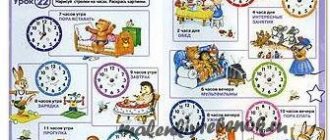The use of modern technologies in the economic education of preschool children
(From work experience)
Goal : To introduce teachers to modern technologies of economic education of preschool children, to teach them how to apply them in their work.
Financial education and education of preschool children is a new direction in preschool pedagogy.
For the second year, our kindergarten has been implementing an exemplary partial educational program for preschool education “Economic education of preschool children: creating the prerequisites for financial literacy.”
For children, introduction to economics is preparation for life and social adaptation in society. By forming in children a correct understanding of the financial world, and cultivating thrift and businesslike behavior, we help them become an independent and successful person.
To teach our students economic concepts, we need to be well versed in them ourselves. I want to share with you my experience in this direction.
To successfully organize educational activities, we have studied modern technologies of economic education. We held a teachers' meeting in the form of a business game "Financial Ring", where we discussed what types of activities we can use them for.
Each teacher presented one of the technologies using a gaming approach. For example: Technology “Educational situation”. We introduce children to professions that involve financial literacy. To do this, we use the “cognitive caterpillar” scheme.
To introduce children to the concept of “Advertising”, you can use the “Situational Task” technology.
For example: a dairy plant has expanded the production of dairy products. We invite children to advertise new varieties of dairy products, that is, make an advertisement and present it using technologies: “Workshop” (children make advertising) and “Mini-production” (show).
For working with parents, effective technologies are “Conversation-Discussion” and “Problem Situation” technologies.
For example: for parents, a situation is proposed: “If a child reacts irritably to every request to buy something, then...”. Answer options are provided. The teacher’s task is to convey to parents the essence of the problem, to teach how to properly get out of this situation.
With the help of “socio-game” technology, through story-based, active role-playing games, we introduce children to the concepts of auction, barter exchange, purchase, sale.
Today I want to teach you how to use the socio-game technology of economic education. Let's consider how you can reveal the essence of the concept - barter, using the game "Barter Exchange".
First version of the game.
Determine the focus group for the first version of the game. I offer teachers barrels of honey and jam.
I explain the rules of the game and reveal the situation.
At the “fair” there are traders and merchants who want to profitably exchange their goods.
The first merchant sells honey to buy jam for home. The second one sold jam to get money and buy honey. Help sellers solve the problem.
(Exchange barrels.)
Second version of the game (with complication)
I explain the rules of the game and reveal the situation.
It’s my birthday and I would like to cook a goose for the guests, but I don’t have the money. What to do? But, I have boots that are too small for me. I’ll go to the “bazaar” and exchange boots for a goose.
I define a focus group using cards of “goods” for exchange. (Boots, goose, axe, shirt, saw). I suggest using a game approach.
I came to the “bazaar” and brought boots to exchange for a goose. I walk through the entire “bazaar”, looking at what is available. People exchange the following goods: an axe, a shirt, a saw, a goose.
I see Lyudmila standing, she exchanges the ax for a goose. I approach her and ask her not to give the goose to anyone, because... I'll come back and pick it up. (Thus, we teach children to negotiate.)
I walk further along the “bazaar”, Olga is standing there. She brought a saw and wants to exchange it for boots. I exchange my boots for a saw.
I go with a saw and meet Elena, who came with a shirt, and exchanges it for a saw.
I traded the saw for a shirt. Then I met Valentina, who exchanged an ax for a shirt.
I take the ax, return with it to Lyudmila and exchange it for a goose.
As a result of four exchanges, I received what I wanted, and the goods were received without money.
Thus, the teachers and I determined that all forms of technology are integrative in nature and allow the development of different types of activities.
As a result of the inclusion of economic education in educational activities, the spatial environment developing subject matter has been replenished in kindergarten.
— Share your experience of working in the magazines “Preschooler” and “Kindergarten Teacher.”
— We are replenishing the “Methodological piggy bank” on economic education.
— Useful links for parents have been posted on the preschool website.
— We developed a case of didactic games on economic education.
This system of work has a positive impact on the formation of financial literacy, and therefore the foundations of economic culture in preschoolers.






